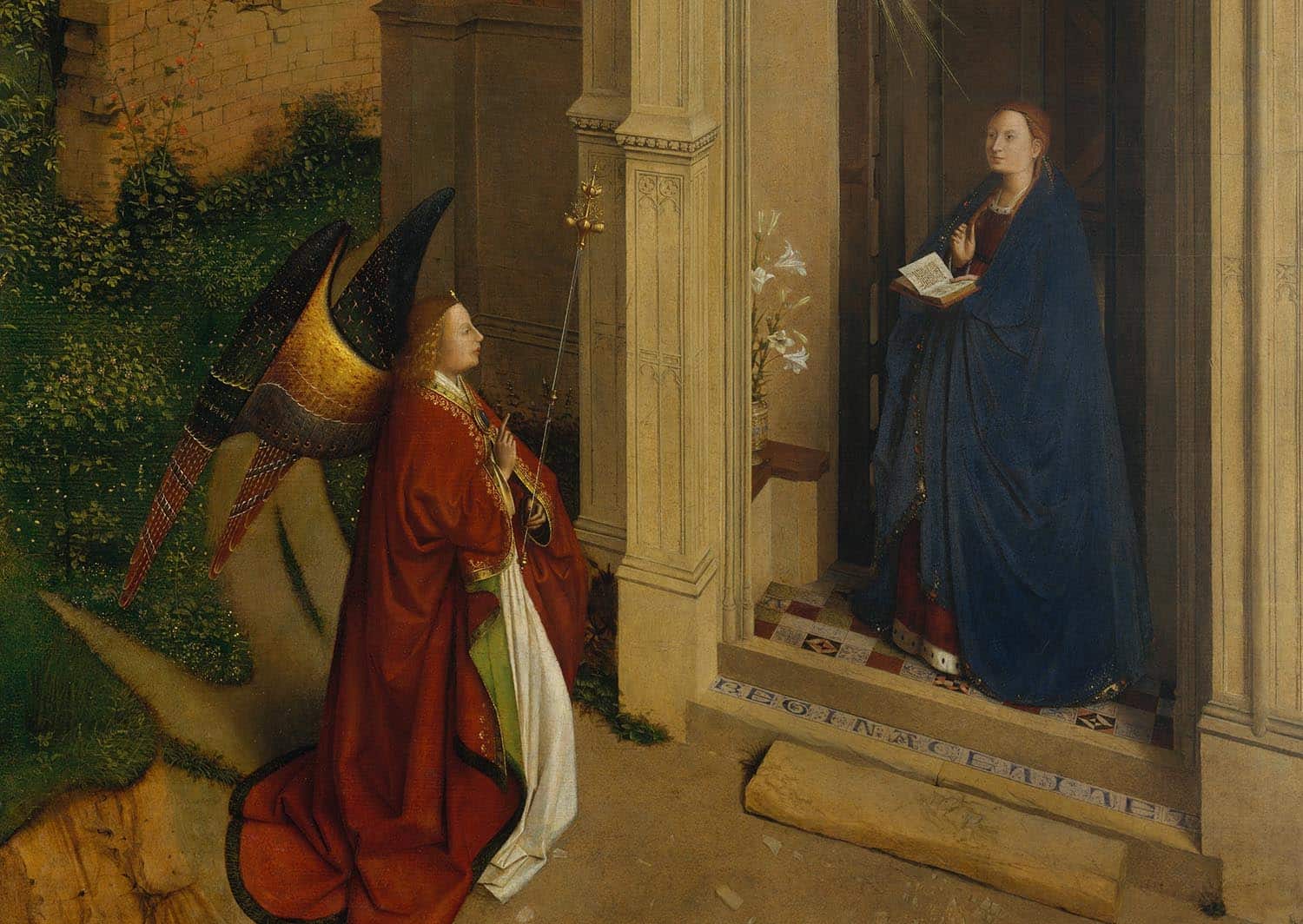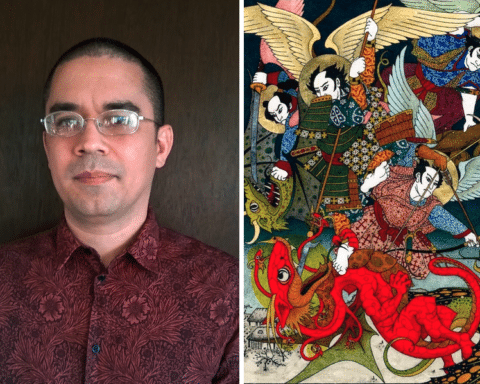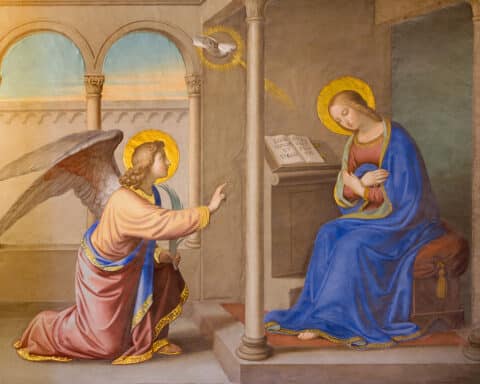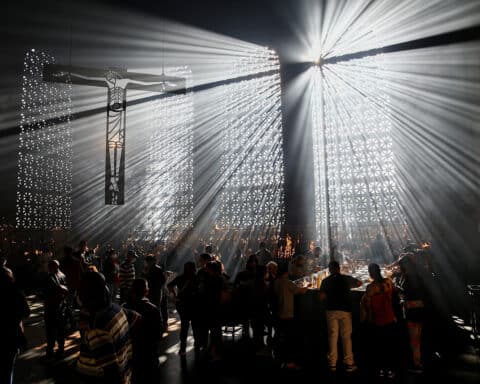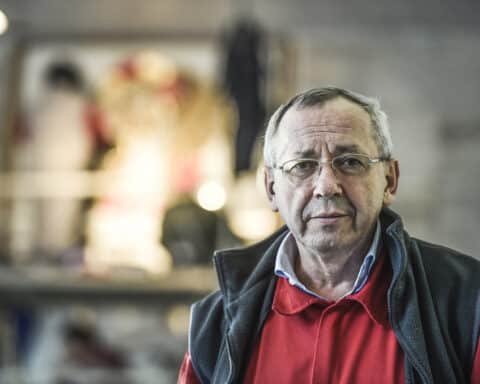Museums around the world feature art depicting the Annunciation, which Catholics celebrate on April 8 this year. The Metropolitan Museum of Art (the Met) in New York City is one of them.
“I think a very large part of it has to do with the Annunciation as the beginning of the Incarnation,” Rome-based art historian Elizabeth Lev told Our Sunday Visitor of artists’ fascination with the Annunciation. “For the history of Christian art, the Incarnation is the whole justification as to why Christians can make art.”
The story of the Annunciation and the Incarnation — when God becomes man — appears in the Gospel of Luke. The angel Gabriel “announces” to the Virgin Mary that she will conceive and bear Baby Jesus. And she, after questioning him, responds with her “yes.”
“If the Old Testament prohibits … the making of images of anything that flies in the air, or walks on the earth, or swims in the sea, at the moment that God becomes man — becomes someone that is knowable, touchable — at this point, you may make a likeness of it,” Lev said. “That is the opening of the door, when not only do we have this incredible event of God becoming man, coming into the world, entering into human history in real time, but for the history of art, it really does permit what will eventually be one of its greatest calling cards: The imagery we’re able to produce, the beauty we’re able to present.”
Both Lev and Stephen F. Auth, author of “Pilgrimage to the Museum: Man’s Search for God through Art and Time,” together with his wife, Evelyn, and Father Shawn Aaron, LC, recommended that people reflect on the different reactions of Mary imagined by artists.
Auth, who draws from the Met in his book, highlighted eight paintings in particular that are (or once were) at the museum to reflect on for the Solemnity of the Annunciation.
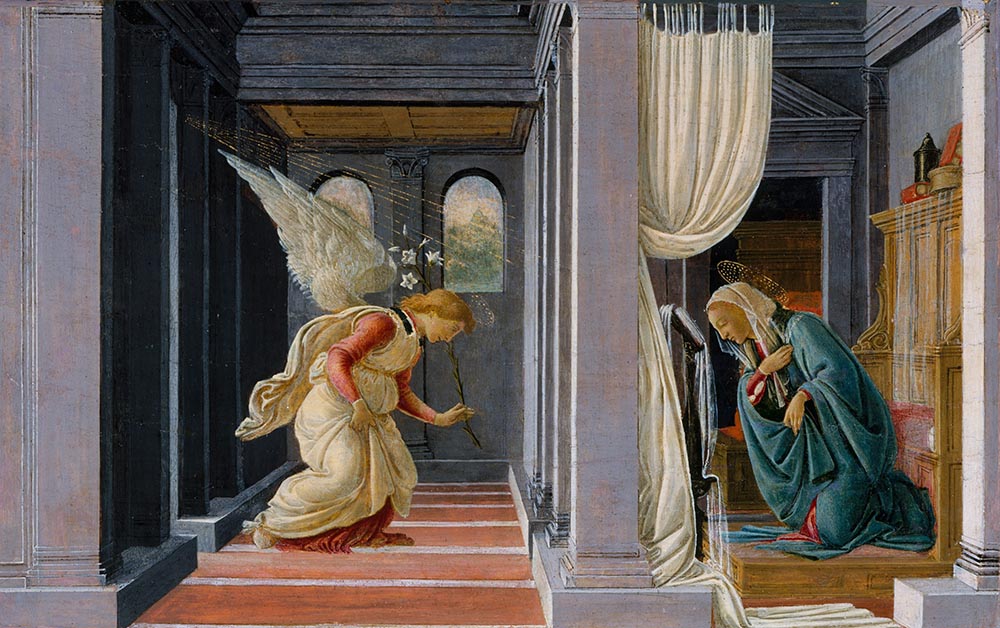
1. “The Annunciation” by Botticelli, or Alessandro di Mariano Filipepi (c. 1485-92)
This Italian artist’s painting is a “little jewel,” Auth told Our Sunday Visitor. While holding a white lily, the winged angel Gabriel bows deeply toward Mary in her bed chamber. Golden rays of light symbolizing the Holy Spirit reach from behind him toward Mary, who kneels on the floor.
“She’s very humbly accepting the mission, she’s holding her chest in modesty,” Auth described.
A series of columns separate the two figures in the painting to emphasize Mary’s purity and that the angel never touched her, he said. The garden outside her bedroom window as well as the lily — which appear in many Annunciation paintings — also symbolize purity.
In addition to Mary, Auth noticed the angel’s posture: He bows before Mary, in that moment, because she’s becoming the Mother of God.
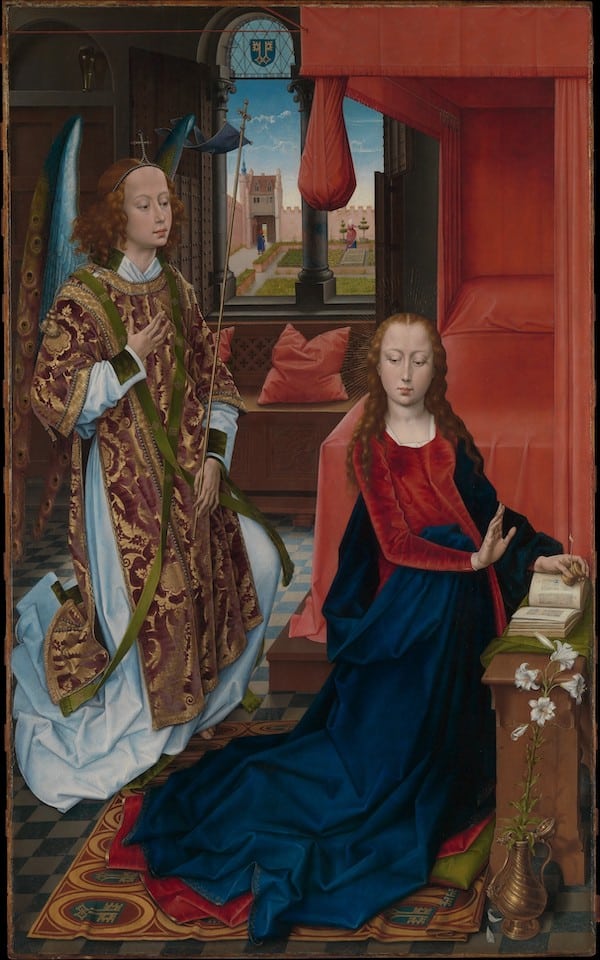
2. “The Annunciation” by Hans Memling (c. 1465-70)
This colorful painting by a Netherlandish artist shows the angel interrupting Mary in her bedroom as she prays before an opened book. Lilies appear to her right while the window behind her reveals a garden.
Auth called the scene more intimate, with the angel placed directly beside the kneeling Mary.
“The only thing [that is] kind of visually dividing the two of them is the red pillow and the pillar of the window,” he said, adding that the pillow’s color likely references Christ’s passion.
Mary almost looks away from the angel as she thinks about his message, he said. She holds her hand up as if to suggest a pause while, at the same time, curls her fingers to signal her consideration or discernment of God’s will, Auth added.
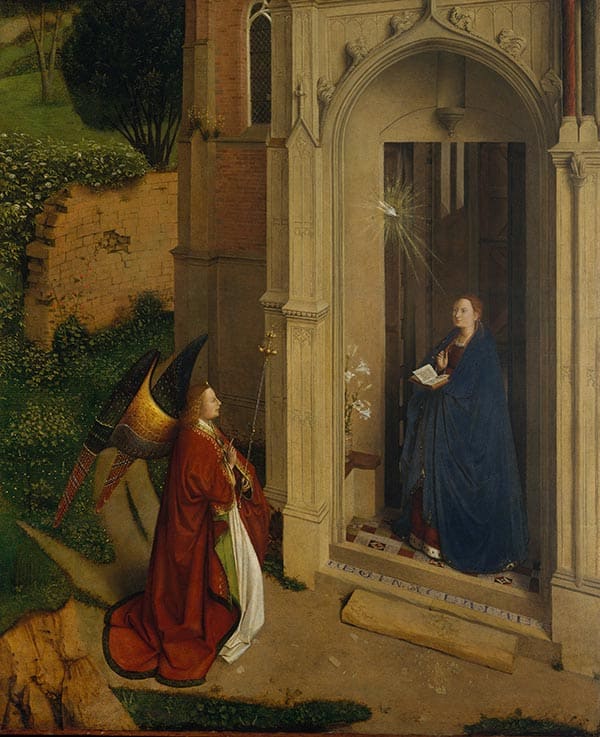
3. “The Annunciation” by Petrus Christus (c. 1445)
This painting, from another Nethlandish artist, depicts the Annunciation from above. The viewer looks down to see the angel Gabriel greeting Mary in the doorway of a church.
“Mary is presented not only as the recipient of the message of the Incarnation, but also as the personification of the Church,” the Met’s description reads. Even the architecture “refers to the coming of Christ and the transition from Judaism to Christianity.”
Nature decorates the background and a lily sits in the vestibule. A dove — the Holy Spirit — descends upon Mary, who holds up one hand while carrying an open book in the other.
Auth interpreted Mary’s position as almost gesturing “yes.”
“It’s a little more focused on the joyfulness of the occasion than the difficulty of the decision,” he said. “And one reason I think the artist does that is because one thing he’s trying to show here is how this event, the Annunciation, marries God to the Church.”

4. “The Annunciation” by Gerard David (c. 1506)
Like Botticelli, this Netherlandish artist separates Mary and the angel Gabriel, this time housing each in their own panel. The angel approaches Mary, who crosses her arms against her chest and kneels before an open book.
“He’s again kind of almost triumphantly announcing the moment,” Auth described. “She’s been in prayer, and now … she’s contemplating the moment.”
Familiar Annunciation symbols and colors appear: A dove hovers above her head. A lily stands to her right. A red bag, which Auth said symbolizes the Passion to come, appears before her.
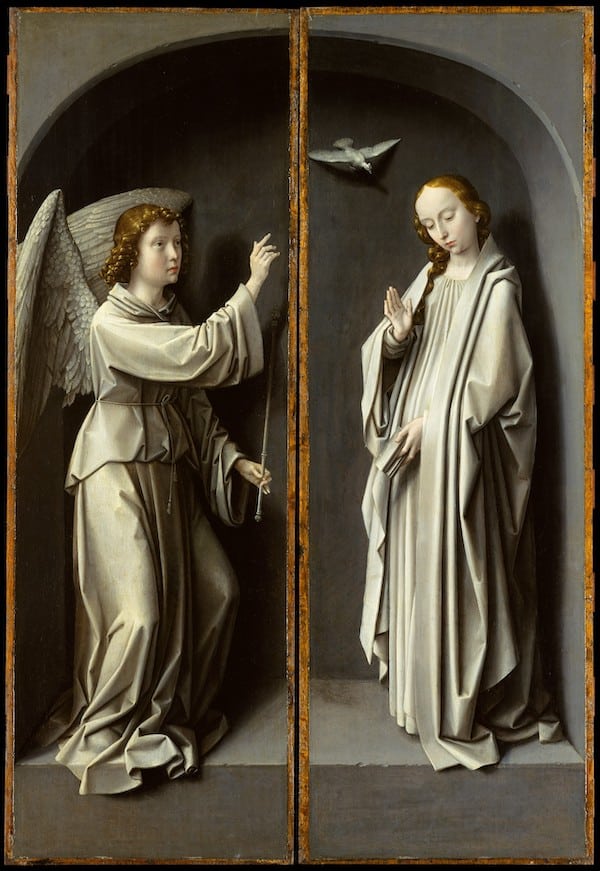
5. “Archangel Gabriel; The Virgin Annunciate” by Gerard David (c. 1510)
Auth highlighted a second Annunciation painting by this Netherlandish artist. The artwork almost appears in black and white, he described, with the figures resembling statues.
Separated into different panels, the angel Gabriel looks toward Mary and the dove between them. The Holy Spirit is “about to puncture her,” Auth described.
Mary looks downward, with one hand held up. With her other hand, she keeps her place in her book.
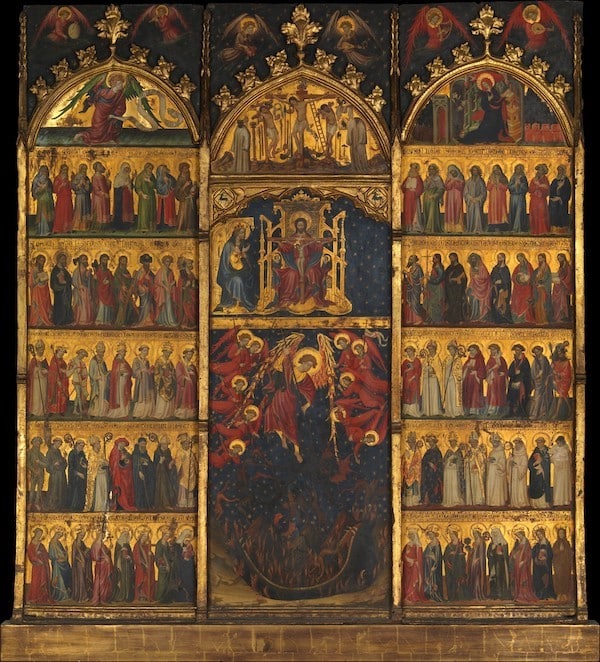
6. “The Trinity Adored by All Saints” by a spanish painter (c. 1400)
Several paintings at the Met, Auth revealed, include the Annunciation as part of a larger painting.
“This is very typical, that [artists] would do the Annunciation as part of the whole life, the whole story of the Gospels,” he said.
In this painting that centers on the Trinity, the Crucifixion appears between the angel Gabriel and Mary. On the left, the angel Gabriel kneels while pointing upward. On the right, Mary looks in his direction (and in the direction of the Crucifixion). A lily appears to her right, with a dove flying toward her from above. She places one hand on her chest, with the other on an open book.
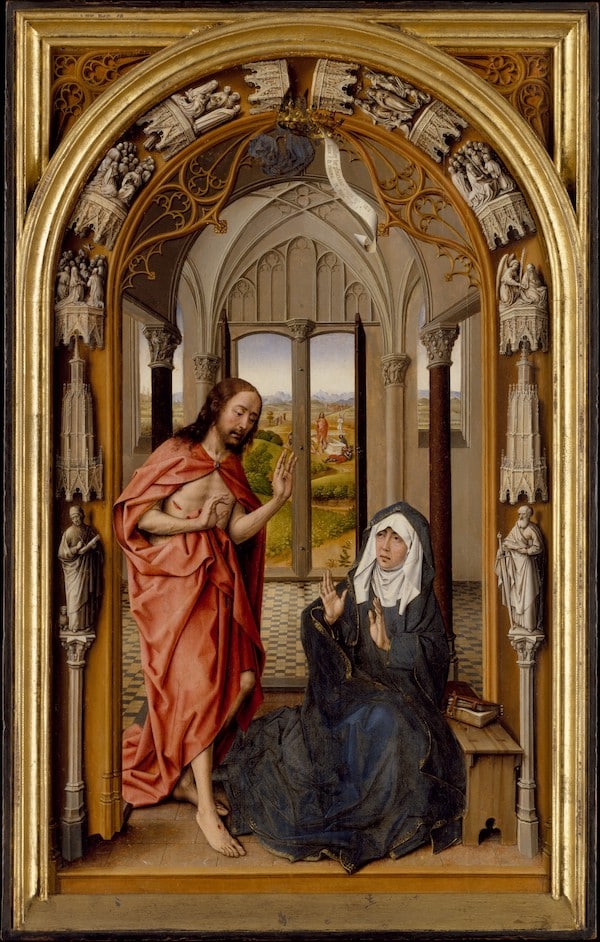
7. “Christ Appearing to His Mother” by Juan de Flandes (c. 1496)
Auth recommended concluding an Annunciation pilgrimage with this painting, by another Netherlandish artist, “because it moves on to the end of the story.”
Instead of the angel Gabriel, a resurrected Christ appears to his mother, Mary. In the background, through the window, he rises from his tomb.
“You got the garden in the background and this time the garden is Christ,” Auth said. “If you zoom in, that’s Christ resurrecting.”
The painting follows a formula similar to many Annunciation paintings: Christ appears to a surprised Mary. She holds up her hands, toward her son, after sitting with a book in prayer.
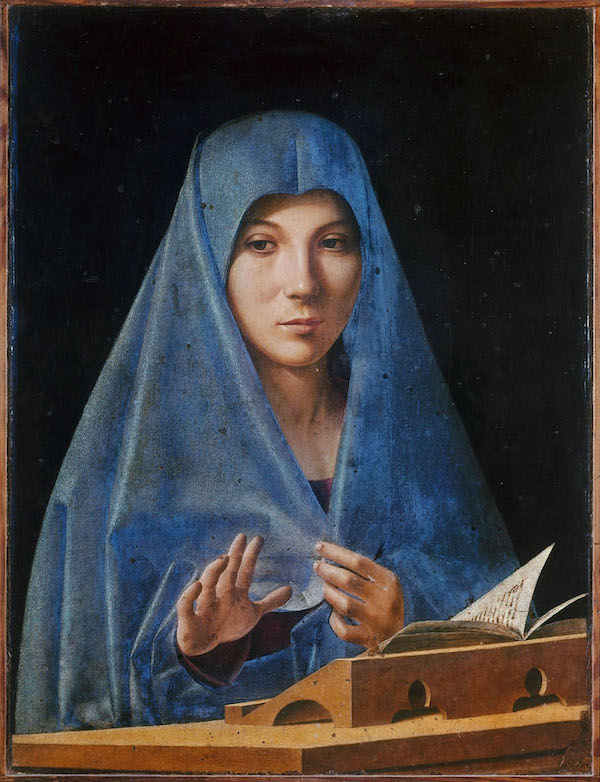
8. “Virgin Annunciate” by Antonello da Messina (c. 1476)
Even though this Italian artist’s painting is not currently at the Met, Auth regularly referred to it while describing the other Annunciation paintings at the museum. Created around the same time as Leonardo da Vinci’s “Mona Lisa,” Auth refers to it as the “Catholic Mona Lisa.”
This painting, Auth said, has traveled outside of Sicily twice in 500 years, including once to the Met (from December 2005 to March 2006).
“He almost depicts Mary making the decision, which is so incredible,” Auth said of the painting.
The painting depicts a veiled Mary, alone, before an open book. Her left hand clasps her veil in a sign of modesty. She holds her right hand out, suggesting a pause.
“Messina actually pictures the hand curling, which is different than a ‘no,'” he said of the artist’s depiction of Mary. “It’s more of a ‘Okay, let me hear you out.’ She’s considering the request.”
He compared it to Botticelli’s painting, where the angel formally delivers his message to Mary and she accepts before he departs. Messina, he said, is “imagining a more difficult proposition.”
“That, like all of us in some ways, we get inspired by God, we are in prayer, we feel like God might be talking to us,” he described. “And there’s some ambiguity about it, right? I mean, the angel is a kind of ethereal being. Like did I really have — was that angel really there?”
At the same time, he said, the moving pages of Mary’s prayer book confirm the angel’s presence. Her eyes, he said, look at the angel and focus on the message from God.
“You see the way she assents, like she nods her head,” he concluded. “And with [Mary’s] pursed lips, you say to yourself, ‘I’m going to put my money on the girl. She’s going to get it done.'”

